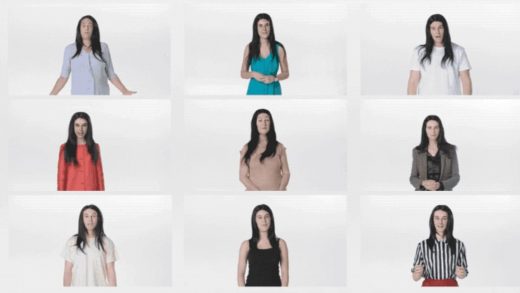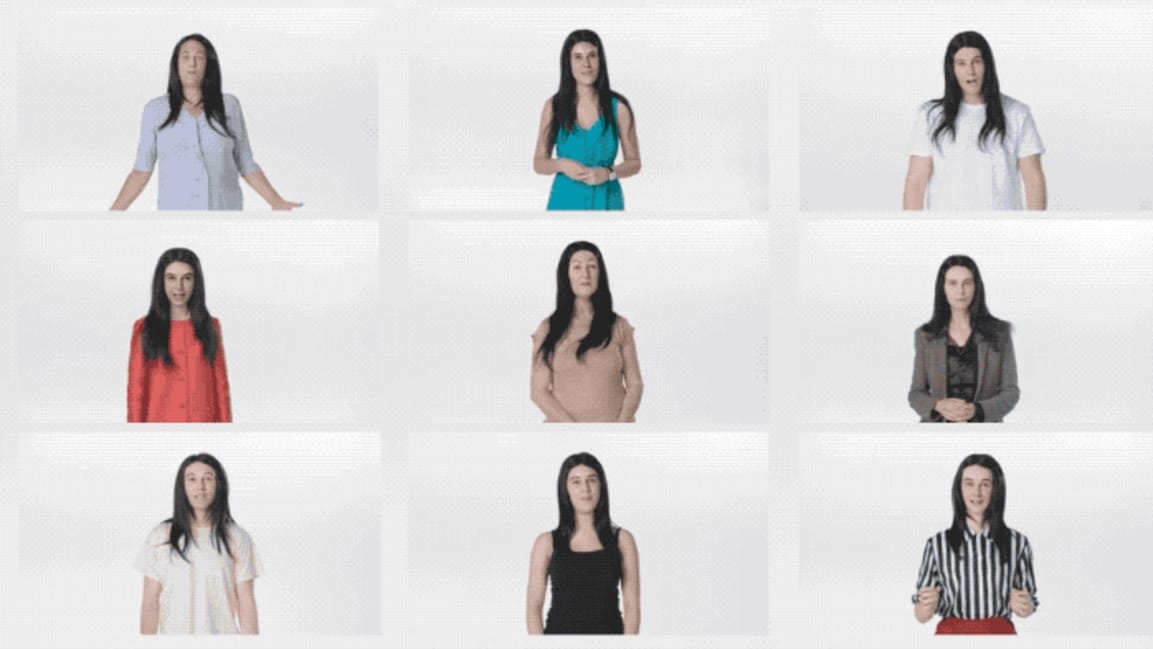This new deep fake video is both advertising and a piece of art
Remember back in April when Barack Obama called President Trump a “total and complete dipshit?” Okay, it was really Jordan Peele doing his flawless Obama impression, over an artificial intelligence-generated video that made it look almost exactly like the former president. Peele created the video with BuzzFeed as a warning to us all about how deep fakes could be used to distort reality, and it has been a constant topic around political and societal stability, how we can all protect ourselves against being duped, and the potential consequences if we can’t.
Now, Turner Prize-winning British artist Gillian Wearing is using deep fake video to create a new extension of her work, as part of the Cincinnati Art Museum exhibition “Life: Gillian Wearing.”
Wearing, whose work can be found at The Museum of Modern Art in New York, the Tate Gallery in London, and L.A.’s Hammer Museum, is known for being a part of her own creations, using lip-syncing, masks, and more. The Cincinnati Art Museum describes her current exhibition, a series of video installations and photography, as charting new territory in Wearing’s “identity, self-revelation and contemporary media culture, exploring tensions between public and private life, the drive to tell our own secrets and know the secrets of others, and the blurry line between documentation and a constructed point of view.”
The idea for the deep fake ad, in which a series of strangers appear on screen with Wearing’s face, came out of a conversation with Cincinnati Art Museum curator Nathaniel Stein about how the museum might market the exhibition. Wearing says that inspired her to create a piece of work that was an ad of herself, which led her to researching the best in recent advertising. Then she saw Nike’s “Nothing Beats A Londoner.”
“I loved it because it felt very in the moment, and it felt like a short film as well as an ad,” says Wearing. “So I looked up who made it, and it was Wieden+Kennedy. And it turns out they’re located just a few streets away from where I live. I contacted them, and we had a meeting straight away.”
Wieden+Kennedy London’s executive creative director Iain Tait says they wanted to provide Wearing with the most classic advertising brief template to fill out, as if she was the product or brand, making the process as much like they would go through with any other client.
“In talking about things, we started chatting about deep fakes and showed her the Nicolas Cage example, and a few more,” says Tait. “At that point, it got clear there was something in this. So we started exploring it, doing some prototyping to see what we could do with it. At the same time, Gillian started thinking about it as well.”
Wearing says she knew she wanted other people to be her. “When I saw the deep fakes, it just seemed like the perfect idea, as it has this feeling of un-realness, a bit like a mask,” she says. “And I do become other people in my work via silicon masks, and this seems like the perfect way for other people to be me without actual masks. I started casting actors to be in the film, and it happened over quite a few months.”
While not an actual ad for the exhibit, but a piece for the exhibit itself, conceptually it’s still part ad, part artwork, Wearing sees the film and the use of deep fakes as both a relevant and creative way to market her work, as well as a statement on her need to do so in the first place.
“I was very interested in using this technology to question the veracity of truth and identity, which are relevant to a lot of things we’re all in the midst of at this moment in time,” Wearing says. “I just thought this was an interesting time to think about how I put myself across to people who don’t know who I am, for this particular piece. There is a lot of noise out there, so how do people stand out? It’s an interesting question.”
The full five-minute film is only available within the Cincinnati Art Museum exhibit, with future touring dates and locations to be announced at a later date.
(30)



